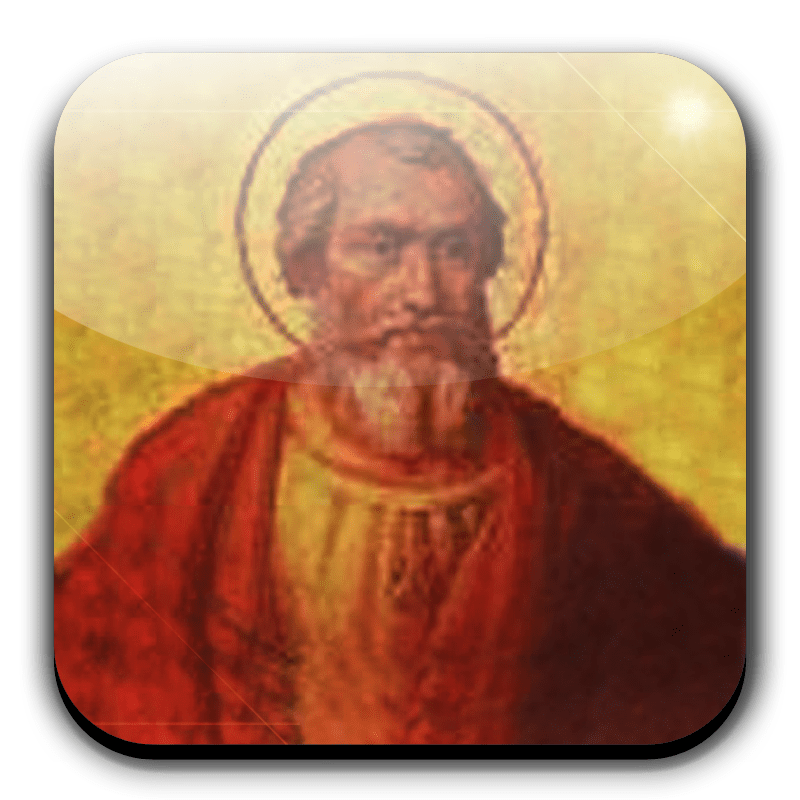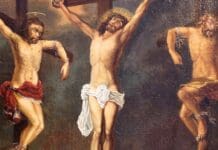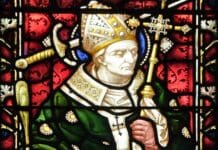Date of birth unknown; consecrated 18 Jan., 336; d. 7 Oct., 336. After the death of Pope Sylvester, Mark was raised to the Roman episcopal chair as his successor. The “Liber Pontificalis” says that he was a Roman, and that his father’s name was Priscus. Constantine the Great’s letter, which summoned a conference of bishops for the investigation of the Donatist dispute, is directed to Pope Miltiades and one Mark. This Mark was evidently a member of the Roman clergy, either priest or first deacon, and is perhaps identical with the pope.
The date of Mark’s election (18 Jan., 336) is given in the Liberian Catalogue of popes, and is historically certain; so is the day of his death (7 Oct.), which is specified in the same way in the “Depositio episcoporum” of Philocalus’s “Chronography”, the first edition of which appeared also in 336. Concerning an interposition of the pope in the Arian troubles, which were then so actively affecting the Church in the East, nothing has been handed down. An alleged letter of his to St. Athanasius is a later forgery.
Two constitutions are attributed to Mark by the author of the “Liber Pontificalis”. According to the one, he invested the Bishop of Ostia with the pallium, and ordained that this bishop was to consecrate the Bishop of Rome. It is certain that, towards the end of the fourth century, the Bishop of Ostia did bestow the episcopal consecration upon the newly-elected pope; Augustine expressly bears witness to this . It is indeed possible that Mark had confirmed this privilege by a constitution, which does not preclude the fact that the Bishop of Ostia before this time usually consecrated the new pope. As for the bestowal of the pallium, the account cannot be established from sources of the fourth century, since the oldest memorials which show this badge, belong to the fifth and sixth centuries, and the oldest written mention of a pope bestowing the pallium dates from the sixth century (cf. Grisar, “Das römische Pallium und die altesten liturgischen Schärpen”, in “Festschrift des deutschen Campo Santo in Rom”, Freiburg im Br., 1897, 83-114).
The “Liber Pontificalis” remarks further of Marcus: “Et constitutum de omni ecclesia ordinavit”; but we do not know which constitution this refers to. The building of two basilicas is attributed to this pope by the author of the “Liber Pontificalis”. One of these was built within the city in the region “juxta Pallacinis”; it is the present church of San Marco, which however received its present external shape by later alterations. It is mentioned in the fifth century as a Roman title church, so that its foundation may without difficulty be attributed to St. Mark. The other was outside the city; it was a cemetery church, which the pope got built over the Catacomb of Balbina, between the Via Appia and the Via Ardeatina.
The pope obtained from Emperor Constantine gifts of land and liturgical furniture for both basilicas. Mark was buried in the Catacomb of Balbina, where he had built the cemetery church. His grave is expressly mentioned there by the itineraries of the seventh century. The feast of the deceased pope was given on 7 Oct. in the old Roman calendar of feasts, which was inserted in the “Martyrologium Hieronymianum”; it is still kept on the same date.


















What’s up, I log on to your blogs on a regular basis. Your writing style is witty, keep up the good work!